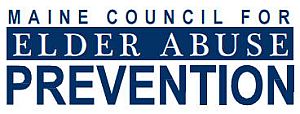Red Flags for Abuse
What to look for:
- Sudden changes in the elder’s appearance: poor hygiene, dressed improperly for the weather, sunken eyes, bedsores, loss of weight.
- Sudden changes in the elder’s personality; increased or unreasonable levels of anxiety, fearfulness and/or depression.
- The elder becomes uncommunicative and unresponsive.
- Sudden or swift decline in the health; malnourishment or sudden loss of weight.
- Visible injury that has not been cared for, or cannot be explained with a realistic explanation.
- A change in routine, no longer attending events or participating in events enjoyed in the past.
- Social isolation/ not allowed to visit alone. Sudden loss of ability to meet financial obligations.
- Going without things the elder needs or has always had in the past.
- The elder states that they have had conflicts or problems with their caregiver and/or they use coded disclosures.
National Institute on Aging. Elder Abuse.
